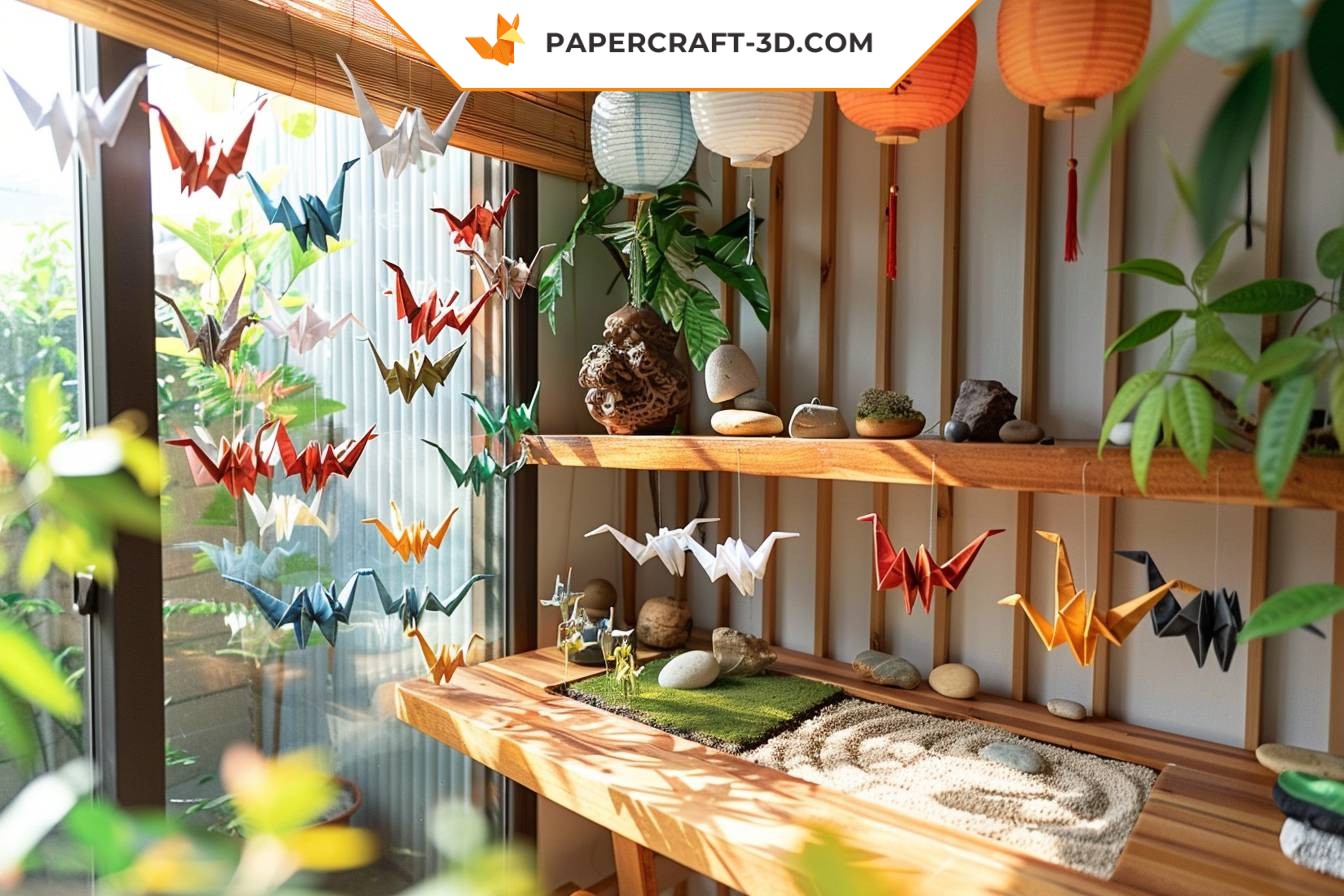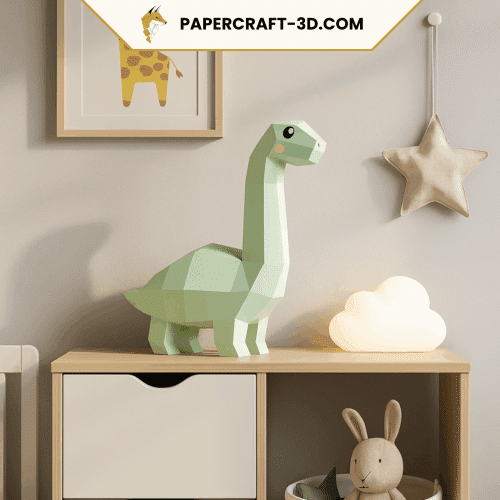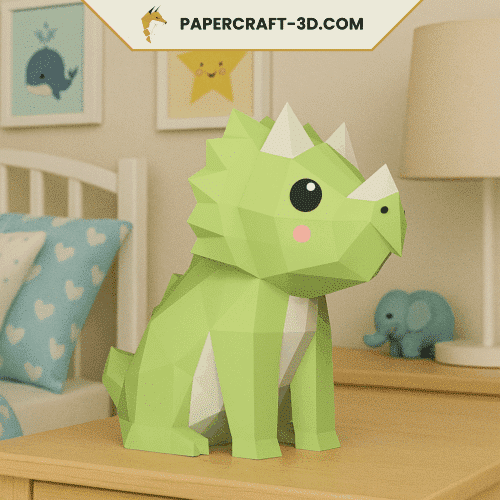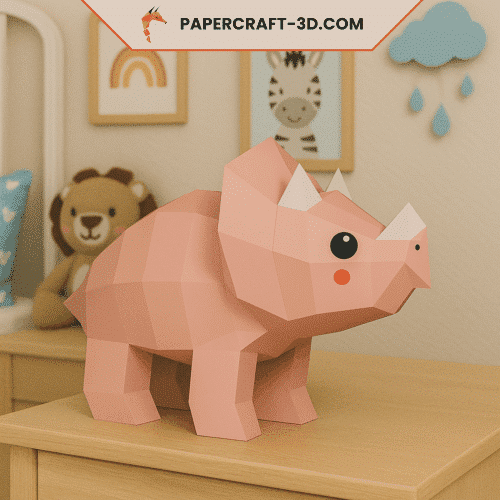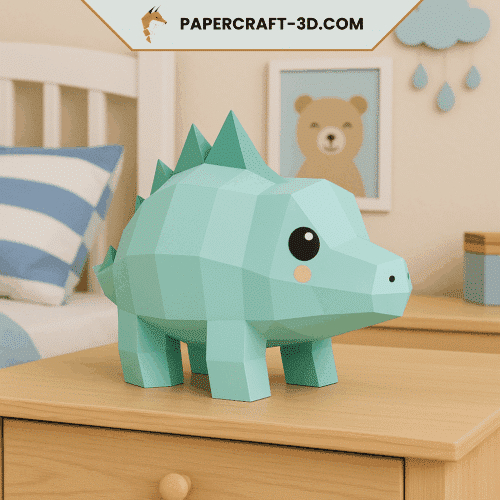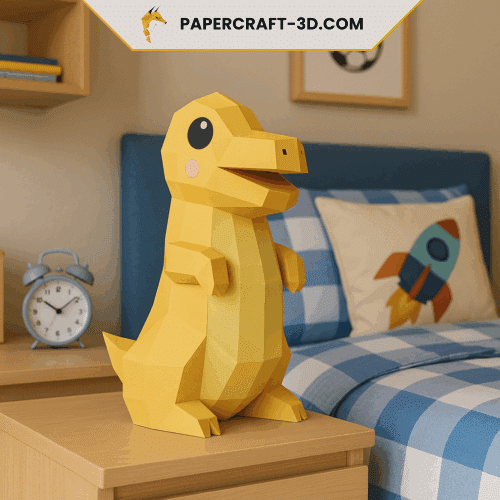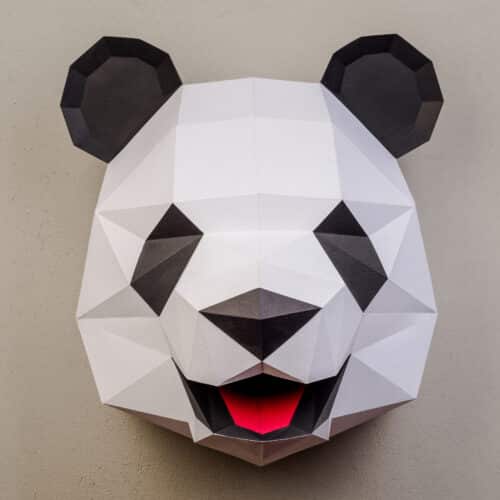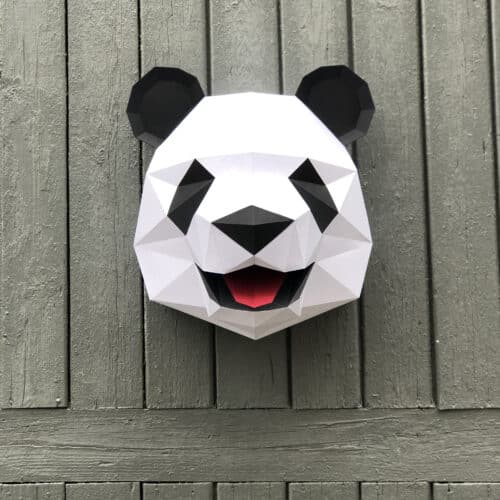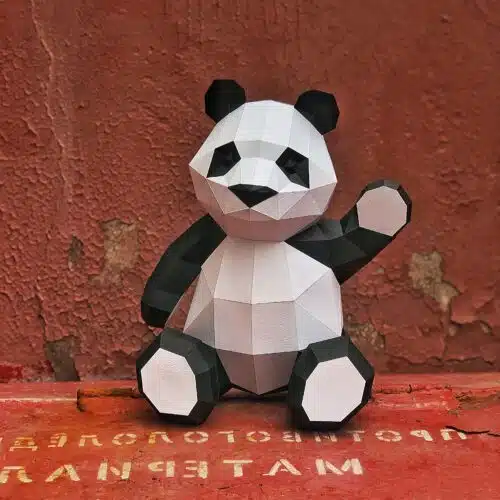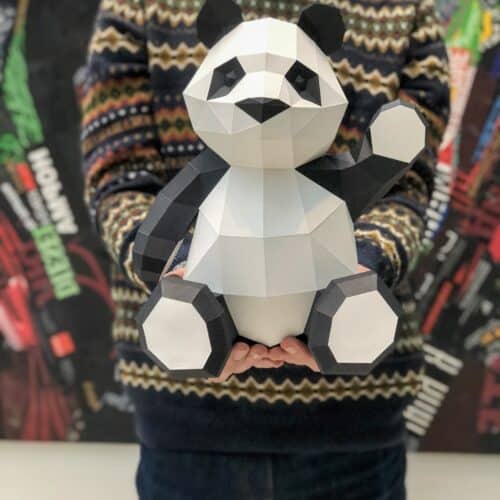Are you fascinated by Japanese culture? Your interest is shared by many. According to a recent study, 65% of people surveyed said they were attracted by the Japanese aesthetic in their interior design. Simplicity, harmony and respect for nature are the pillars of this style, which is conquering more and more homes around the world. In this article, we offer you a selection of ideas for making your own Japanese-inspired objects to bring that refined Zen touch to your living space.
| Key points to remember |
|---|
| Understand the fundamental elements of Japanese decoration |
| Discover unique ideas for Japanese-inspired DIY objects |
| Learn how to integrate Japanese aesthetics into different areas of your home |
Understanding Japanese aesthetics
If you’ve ever dreamed of transforming your home into a haven of peace, theJapanese aesthetic is an essential source of inspiration. This approach to interior design emphasizes simplicity, minimalism and nature – elements that can transform any space into a serene, soothing place.
The importance of simplicity and minimalism
In Japanese aesthetics, less is more. Minimalism, based on the idea that every object should have a precise function, is at the heart of this philosophy. Spaces are often devoid of superfluous decoration, creating an orderly, tranquil environment.
The balance between natural and man-made elements
One of the most striking aspects ofJapanese aesthetics is its deep connection with nature. Natural materials such as wood, bamboo and stone are widely used in Japanese homes. What’s more, it’s not uncommon to see houseplants or even Zen gardens integrated into interior spaces.
The importance of emptiness (Ma)
In Japanese interior design, emptiness or “Ma” plays an essential role. It’s a complex notion that refers to the space between objects. By creating empty zones in a room, we can accentuate the visual impact of surrounding objects while promoting a peaceful atmosphere.
Light and shadow: a subtle interplay
Light is another crucial element in Japanese aesthetics. Rather than using direct, intense light, Japanese designers prefer to play with shadows to create a soft, soothing ambience.
- Simplicity: The idea that every object should serve a specific purpose.
- Nature: The abundant use of natural materials such as wood and bamboo.
- Void (Ma): The space between objects that helps create a calm, orderly atmosphere.
- Light: A subtle use of light to create shadows and a soothing ambience.
By understanding these key elements, you can begin to consider how to incorporate the Japanese aesthetic into your own DIY projects. Whether it’s choosing natural materials for your creations or leaving space between your objects, every detail counts in creating an interior that exudes serenity.
Japanese-inspired DIY project ideas
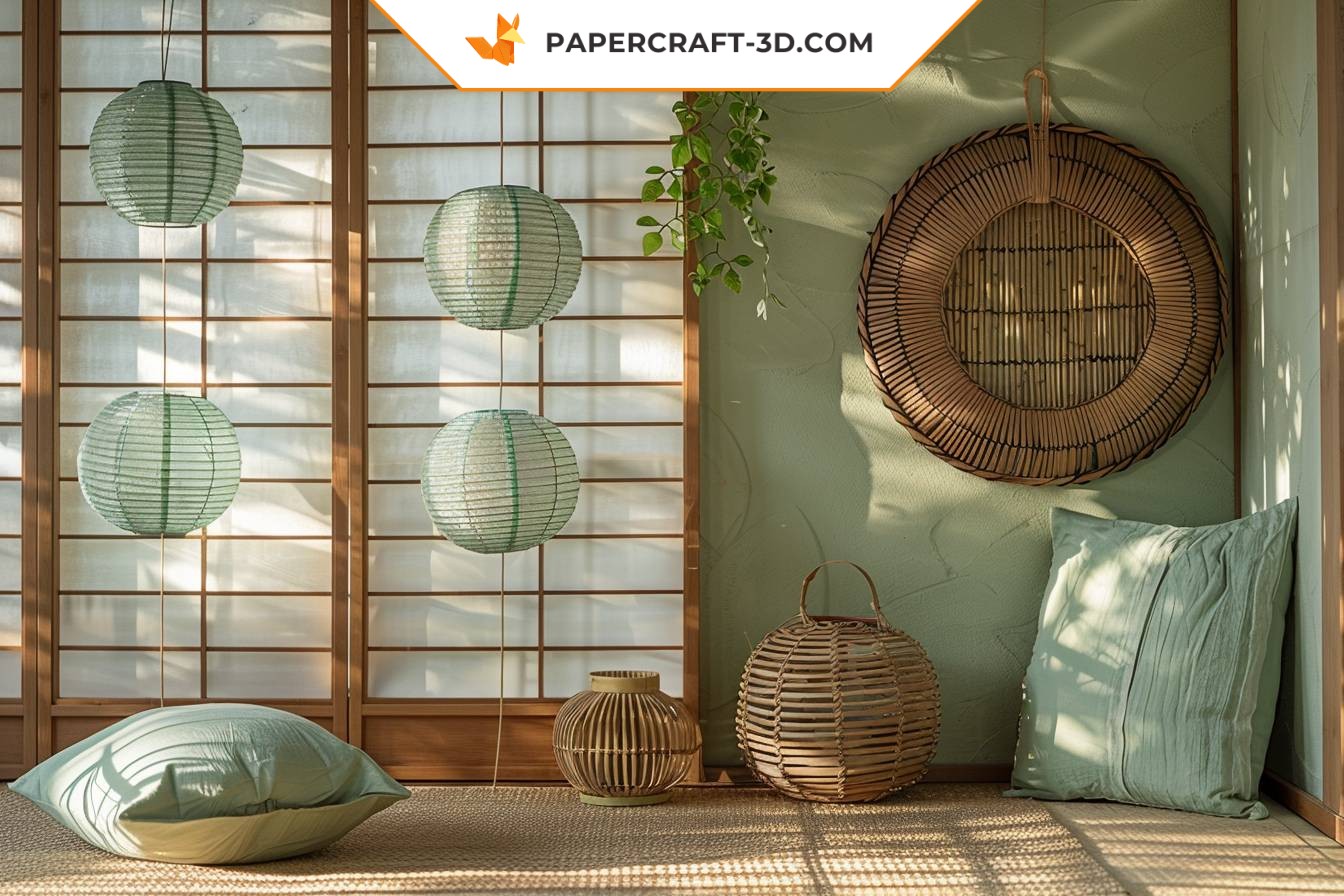
Ready to infuse some Japanese aesthetics into your space? Here are a few ideas for Japanese-inspired DIY projects that will add a unique touch to your interior design.
Washi lamp
Washi paper lamps are an iconic element of Japanese interior design. To make your own, you’ll need washi paper (a type of Japanese paper), a wooden frame and an LED bulb. The result? A soft, warm source of light that instantly evokes the land of the rising sun.
Tatami cushions
Why not make your own Tatami cushions? These floor cushions are a staple of Japanese homes. You can make them from straw, with a fabric cover for added comfort. They’ll add a real Zen touch to your living room or bedroom.
Kintsugi mirror
Kintsugi is the Japanese art of repairing broken objects with gold, symbolizing that scars are an integral part of our history. For this project, you’ll need a broken mirror, strong glue and gold paint. Once completed, this Kintsugi mirror will be much more than just a decorative object: it will be a visual reflection of the journey we all go through in life.
Ikebana floral painting
Ikebana is the traditional Japanese art of flower arranging. To make your own Ikebana floral painting, you’ll need a variety of fresh and dried flowers and a wooden stand. It’s an elegant and natural way to add a Japanese touch to your home.
| Project | Materials required |
|---|---|
| Washi lamp | Washi paper, wooden frame, LED bulb |
| Tatami cushions | Straw, fabric cover |
| Kintsugi mirror | Broken mirror, strong glue, gold paint |
| Ikebana floral painting | Fresh and dried flowers, wooden stand |
So, which project inspires you most? Whichever one you choose, remember: the essence of Japanese decoration lies in simplicity and respect for nature. Happy design!
How to integrate your DIY objects into your decor
Once you’ve created your Japanese-inspired DIY objects, the next step is to incorporate them into your space. This is a delicate process, requiring thoughtful consideration of balance, harmony and the flow of the room.
Choose the ideal location
Every object you create has its place. For example, an Ikebana floral arrangement would look great on a coffee table or shelf, while a kakemono (a hanging painting or calligraphy) would have more impact on an empty wall.
Mix and match with care
Japanese aesthetics value balance and simplicity. Avoid overloading a space with too many DIY objects. A single item may be enough to give the room a Japanese touch.
Play with textures and colors
Japanese-inspired DIY objects often use natural materials such as wood, bamboo or paper. Try combining these textures with those already present in your home. It’s time now to move on to our suggestion for those who want to take their passion for Japanese design even further.
Enhance your space with Papercraft-3D.com
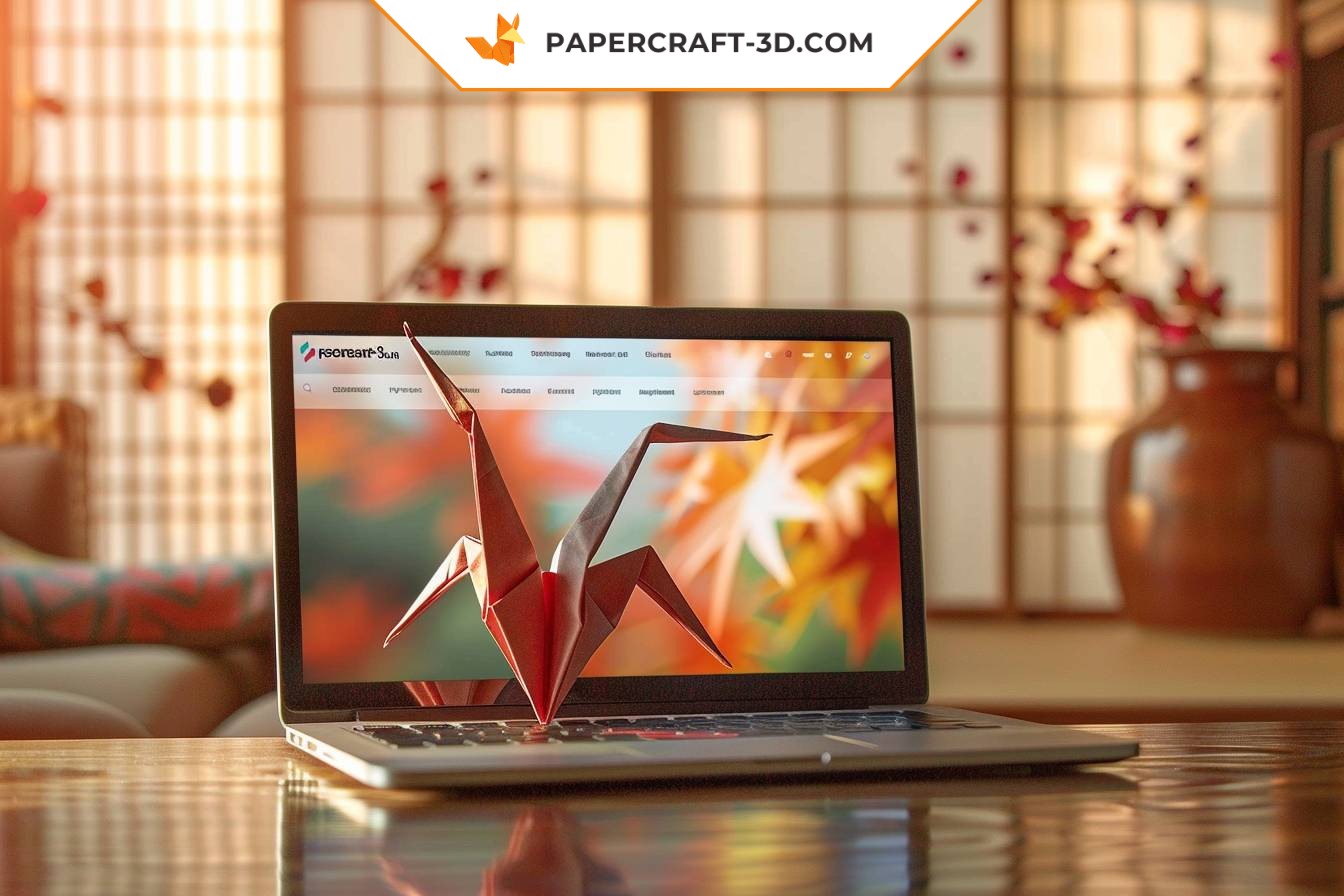
Looking for something unique to brighten up your home? Let yourself be tempted by our origami and 3D papercrafts at Papercraft-3D.com. Our carefully crafted creations will bring a touch of Japanese sophistication to your home. You’ll appreciate the finesse of our origami and the complexity of our 3D papercrafts. Whether you’re a DIY novice or expert, our products offer a rewarding and enriching experience. So why wait? Visit Papercraft-3D.com and start transforming your space today!





